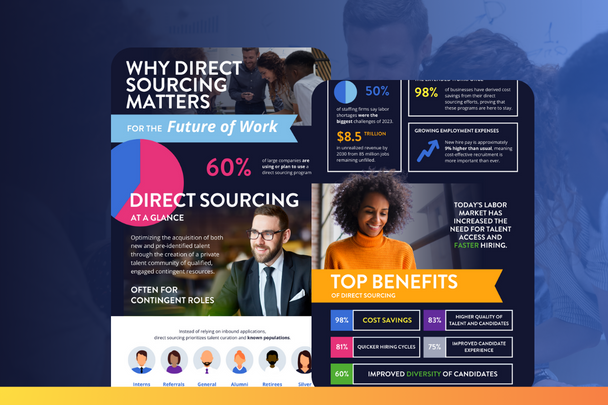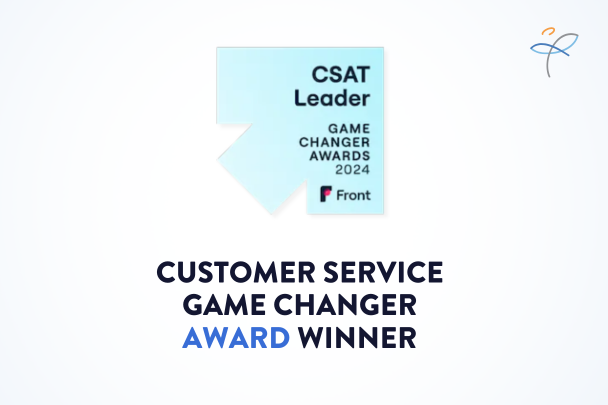The creative industry is a unique, complex ecosystem – there’s the client (and sometimes, the client’s client), the agency (and sometimes, the parent company of the agency), the agency employees and of course, freelancers. Hiring freelancers is crucial to the creative industry ecosystem, but hiring them as independent contractors can be tricky due to client-driven contractual obligations and state-specific regulations. Agencies have shifted to hiring freelancers as temporary employees, but many also mistakenly think that it’s as easy as paying these workers the same day rate they received as independent contractors.
IT’S NOT THAT SIMPLE.
Under this approach, it seems like freelancers would get a fixed amount of pay for each day worked, regardless of the number of hours actually worked in the workday. The freelancer has a guaranteed amount of money and the agency has budget predictability – seems like a win-win but unfortunately, it’s too good to be true.
WHAT’S THE PROBLEM?
In paying W-2 employees a day rate, many agencies believe that the workers will not be entitled to overtime (OT). They might also assume that freelancers need not track their hours. Both of these ideas are misconceptions. If W-2 freelancers fail to track hours and aren’t paid the OT they’re owed, agencies are not in compliance with wage and hour laws. This creates non-compliance, legal liability and potential financial penalties.
DAY RATE BASICS: WHY AGENCIES PAY CREATIVE EMPLOYEES THIS WAY AND WHAT THEY’RE OFTEN DOING WRONG
Agencies often perceive day rate compensation to be simple – one day of work, one day of pay.
It’s not that straightforward. When it comes to day rates, each hour worked must be paid at the proper rate, which can only be calculated correctly when agencies accurately track and record W-2 employees’ hours.
According to the Fair Labor Standards Act (FLSA), failing to pay non-exempt employees a premium rate when overtime hours are worked is a direct violation of federal law. The FLSA defines overtime as hours worked beyond 40 each workweek and overtime compensation must be at least 1.5x the regular rate. Some states, such as California, have more generous overtime rules and require additional tracking to ensure compliance with daily OT calculations.
In most places, when a freelancer works more than 40 hours in a workweek, the OT pay computations begin. To properly calculate OT amounts due, the employer must apply the correct overtime or double time premium to the standard pay rate. When you hire someone on an hourly basis, it’s easy math. When you hire someone on a day rate, the hourly rate must often be re-calculated (sometimes as frequently as every week) because the standard rate is dependent on the total hours worked in a week.
HERE IS AN EXAMPLE TO ILLUSTRATE THE CALCULATION OF OT PAY FOR A W-2 EMPLOYEE ON A DAY RATE
Freelancer Francis worked 50 hours last week and her day rate is $400/day:
$400/day x 5 days worked = $2000 / 50 hours = $40/hr (Regular Pay Rate)
$40/hr x 150% = $60/hr (Overtime Premium Rate)
$1600 (Regular Pay; 40 hours x $40/hour) + $600 (OT Pay; 10 hours x $60/hour) = $2200 weekly wages
The next week, Freelancer Francis works 45 hours and (spoiler alert!) everything changes:
$400/day x 5 days worked = $2000 / 45 hours = $44.44/hr (Regular Pay Rate)
$44.44/hr x 150% = $66.66/hr (Overtime Premium Rate)
$1777.60 (Regular Pay; 40 hours x $44.44/hour) + $333.30 (OT Pay; 5 hours x $66.66) = $2111.90 weekly wages
Crazy, right? Francis worked 5 hours less during the second week, but the difference in her wages was less than $100. Also, who has the time to keep up with a constantly shifting rate in the payroll system? For these reasons, agencies should consider using standard hourly rates or when possible, paying weekly rates (assuming the role and compensation qualifies for exempt status under the FLSA).
There are other misconceptions about how day rates work for situations common to the creative industry, which could lead to non-compliance. For example: If a freelancer works less than a full day (however “full day” is defined), the agency may think it can subtract from the day rate according to the percentage of the day worked — in reality, day rates are considered non-exempt and you can’t prorate non-exempt wages.
The creative industry ebbs and flows — there may be one marathon day at the beginning of the week to meet a deadline, followed by a slow day at the end of the week when things come to a standstill while waiting for client feedback or approval. Agencies might assume that they can “average out” the hours worked over a course of a week to calculate proper hourly rates and comply with overtime rules — this is not true. Actual hours worked must be considered when performing day rate calculations.
There is precedent for large financial judgments against agencies that have not paid day rate employees the proper overtime — even in fields where the day rate model is perceived as the industry norm.
The FLSA OT regulations discussed above do not apply to exempt employees. Soon, the standard for what constitutes an exempt employee could change — a fact that is of particular interest to creative agencies employing contingent workers.
WHAT IS AN EXEMPT VS. A NON-EXEMPT EMPLOYEE? HERE ARE THE BASICS.
What constitutes an exempt employee? The job the employee is doing must pass two tests — the duties test and the salary test.
For the salary test, it’s as simple as it sounds. An employee’s weekly and annual pay must be equal to or greater than the minimums set forth by the FLSA (unless the state – such as New York or California – requires a higher weekly rate).
The duties test is a bit trickier; there are multiple categories, and each has its own criteria to demonstrate meeting the exemption, such as being able to hire and fire employees (executive) or performing work that requires invention, imagination, originality or talent in a field of artistic or creative endeavor (creative). The Department of Labor (DOL) has guidelines for each and engaging human resources when evaluating whether a role can pass the duties test is always a good idea.
In March 2019, the U.S. DOL Wage and Hour Division (WHD) released a Notice of Proposed Rulemaking (NPRM) regarding legislation that would change the parameters for what constitutes an exempt employee under the FLSA.
WHAT WOULD CHANGE UNDER THE DOL’S NEW RULES? THESE ARE THE PROPOSED NEW SALARY MINIMUMS AND OTHER ADJUSTMENTS.
If the legislation passes, the new minimum salary for white-collar employees to be considered exempt will become $679 per week ($35,308 per year). That’s an increase from the current minimum salary for exemption of $455 per week ($23,660 per year). The exemption salary threshold has not increased since 2004.
The current proposal also raises the total annual compensation requirement for “highly compensated employees” (HCE) from $100,000 to $147,414.
In addition, the DOL proposed another update to the overtime rules. Under present laws, employers are dissuaded from providing additional perks to employees, as those perks could cause ambiguity in calculating an employee’s regular rate of pay. The new proposal seeks to clarify what counts and doesn’t count when considering an employee’s pay rate.
THE PROPOSAL WORKS TO THE EMPLOYEE’S BENEFIT, BY EXCLUDING THE FOLLOWING FROM THE CALCULATION OF REGULAR RATE OF PAY:
– the cost of providing wellness programs, onsite specialist treatment, gym access and fitness classes, and employee discounts on retail goods and services;
– payments for unused paid leave, including paid sick leave;
– reimbursed expenses, even if not incurred “solely” for the employer’s benefit;
– reimbursed travel expenses that do not exceed the maximum travel reimbursement permitted under the Federal Travel Regulation System regulations and that satisfy other regulatory requirements;
– discretionary bonuses;
– benefit plans, including accident, unemployment, and legal services; and
– tuition programs, such as reimbursement programs or repayment of educational debt.
WHAT DO THE PROPOSED LABOR RULES MEAN FOR THE CREATIVE INDUSTRY?
In general, a sharpened focus on how people are paid puts more of a spotlight on all employers to ensure employees are being classified and paid correctly. There has been controversy and conversation about independent contractor compliance in the agency world, with the IRS cracking down on the distinction between independent contractor versus W-2 freelancer. The discussion only becomes murkier when agencies hire freelancers with a W-2, then extend the arrangement — as creative projects are known to shift, run into delays or change direction altogether. When a freelancer begins to feel that she is due benefits because of the depth and duration of her engagement — but when an employer feels that isn’t the case due to the initial scope of the arrangement — this can spawn a co-employment conversation that can quickly turn contentious.
WHAT’S THE BEST WAY FOR AN EMPLOYER IN THE CREATIVE INDUSTRY TO STRUCTURE W-2 FREELANCER HIRING?
Hiring creative freelancers is anything but straightforward. Agencies should be particularly careful about widespread misconceptions regarding tracking hours and OT pay.
Does your company:
1. Hire freelancers who are true W-2 employees on a regular basis?
2. Pay freelancers on a day-rate model?
3. Operate in multiple states where wage and hour laws differ from federal standards?
It is far too easy for an agency to be noncompliant with the overtime rules due to the complications of calculating hours worked and effective rates of pay for each employee.
One option many companies turn to is a Workforce Solutions firm who specializes in Employer of Record (EOR) Payrolling Services. As the EOR, the firm takes on the risk and liability associated with accurate payroll processing, making sure workers are classified properly according to FLSA, paying the correct wages, and withholding taxes and garnishments. An EOR relationship can protect creative agencies from wage and hour lawsuits while removing the massive administrative burden that goes along with classifying workers, complying with labor laws and accurately tracking hours and overtime.
As the laws that govern employer-employee relationships continue to evolve, creative agencies should consider engaging the services of outside firm in order to remain compliant with labor laws. The complexity of these regulations requires expertise and the penalties for noncompliance can be devastating.








